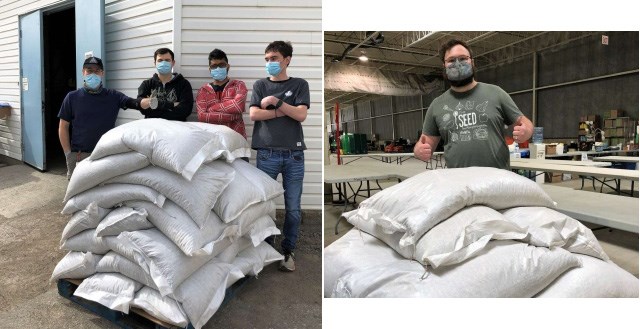The University of Guelph says none of the beans grown last year for a research project will go to waste after more that 2,000 kilograms were donated to provide dozens of nutritious meals for food-insecure Guelphites.
The variety of beans, including kidney, navy, black and cranberry beans, were grown together in Woodstock and Elora as part of a research project led by Peter Pauls at the university’s Department of Plant Agriculture.
The four-year project was seeking to determine the potential benefits of growing a mixture of bean varieties in a single field rather than a single crop.
Dried beans can last in storage for months, but the researchers had a challenge to overcome before they could be donated.
“The problem we ran into is we had no way to clean the harvested beans in order to make them suitable for human consumption,” said Pauls in a news release. “Two thousand kilograms of beans might sound like a large amount, but it’s not for commercial bean processors. So, it was hard to find anyone willing to process what we had.”
Crooked Creek Acres in Strathroy was able to sift and polish the different kinds of beans together, while most commercial bean cleaning equipment is designed to process only one variety at a time.
None of last year’s harvest was wasted as plant agriculture technician Tom Smith arranged the donation of the yield.
A total of 800 kilograms of the beans were sent to the Guelph Food Bank, more than 700 kilograms went to The Seed and the remainder went to U of G’s Hospitality Services to be used in bean chili and stew.
Multiple benefits were found as a result of the four-year study, including some higher yields, signs of greater biodiversity in the crop and potentially greater resiliency to environmental challenges in comparison to growing only a single variety.
They found that planting more than one variety of bean can provide a “buffering effect” in case of crop stress, such as drought or flooding. If one variety perishes during the stress, the other can often survive and fill in the areas left by the more susceptible variety.
The study’s findings were published last year in Frontiers in Sustainable Food Systems. Researchers will continue to test the possible benefits during a trial this summer.
